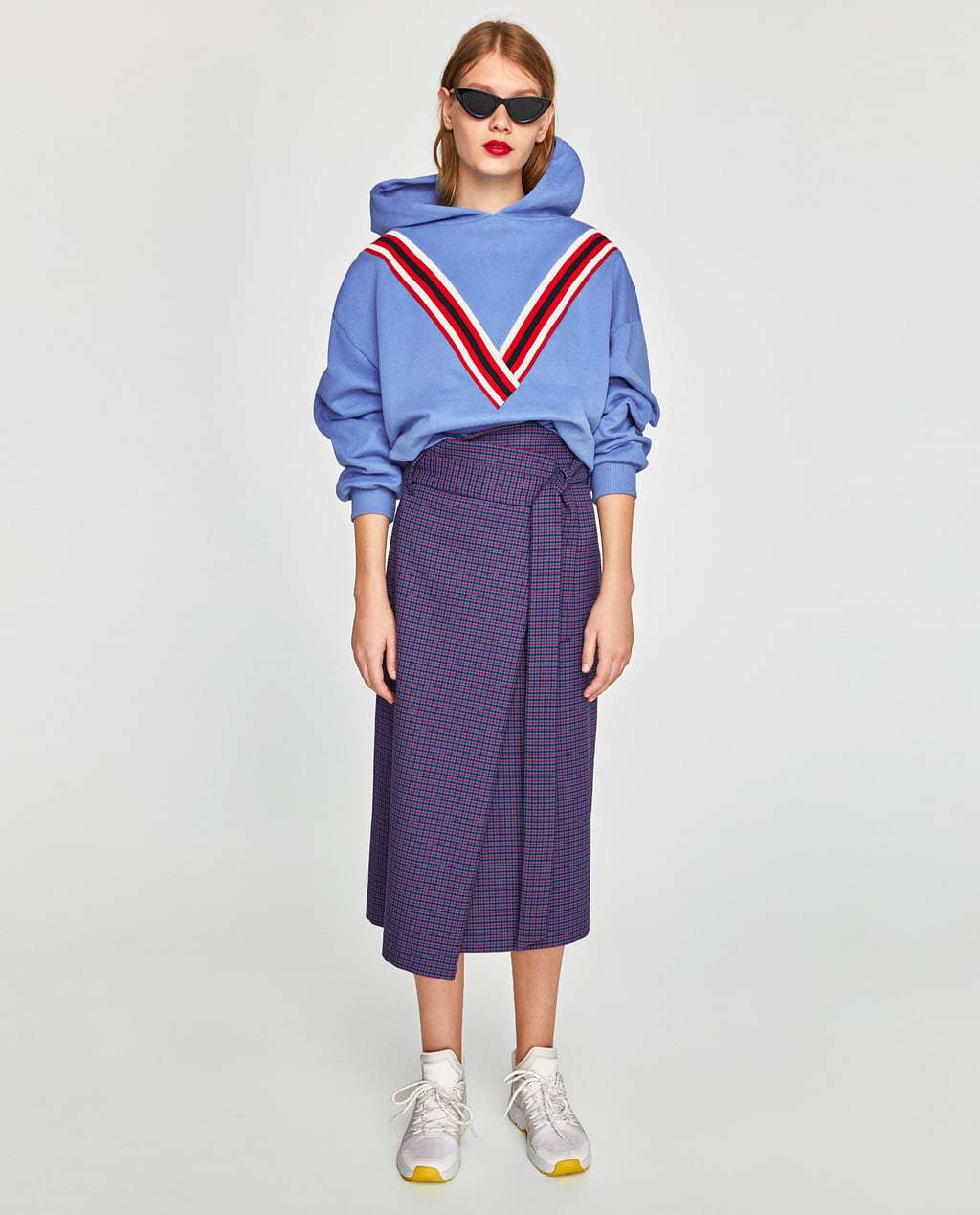
Let’s face it: Black is the go-to color for almost everyone. Most of us zero in on the simple, classic black and white pieces on a rack while completely ignoring colors with names like fuchsia or chartreuse.
Why are bright, fun colors so often overlooked? We are secretly terrified of styling them the wrong way. Every woman has her own set of color matching rules that have been passed down – most of them restrictive, involving more don’ts than yass. But in reality, you can wear more colors together than you think. This easy guide to matching colors will have you fearlessly rocking ruby red heels without Grandma’s belt-shoe-bag rule ringing in your ear.
Related reading: Is Color Analysis Worth It? I Tried Professional Color Analysis & Here’s What Happened
Table of Contents
Introducing: The Color Wheel

You may recognize this spinning little rainbow (albeit stationary for our purposes) from your many years of mandatory art classes — I know I used it for quite a few art projects back in the day. This circle of color is going to serve as a grown-up guide to matching colors. Trust me, it’s foolproof!
How to Match Colors: The Basics
Below, I’ll show you how to match different hues together for a harmonious ensemble.
Primary Colors
Red, blue, and yellow is known as the primary colors. All other colors come from a combination of these three hues. Primary colors can work great for a monochrome look, which means styling an outfit using only one color. This idea seems basic, but when executed correctly, appears modern and chic. Utilizing only one color lengthens and streamlines the body.
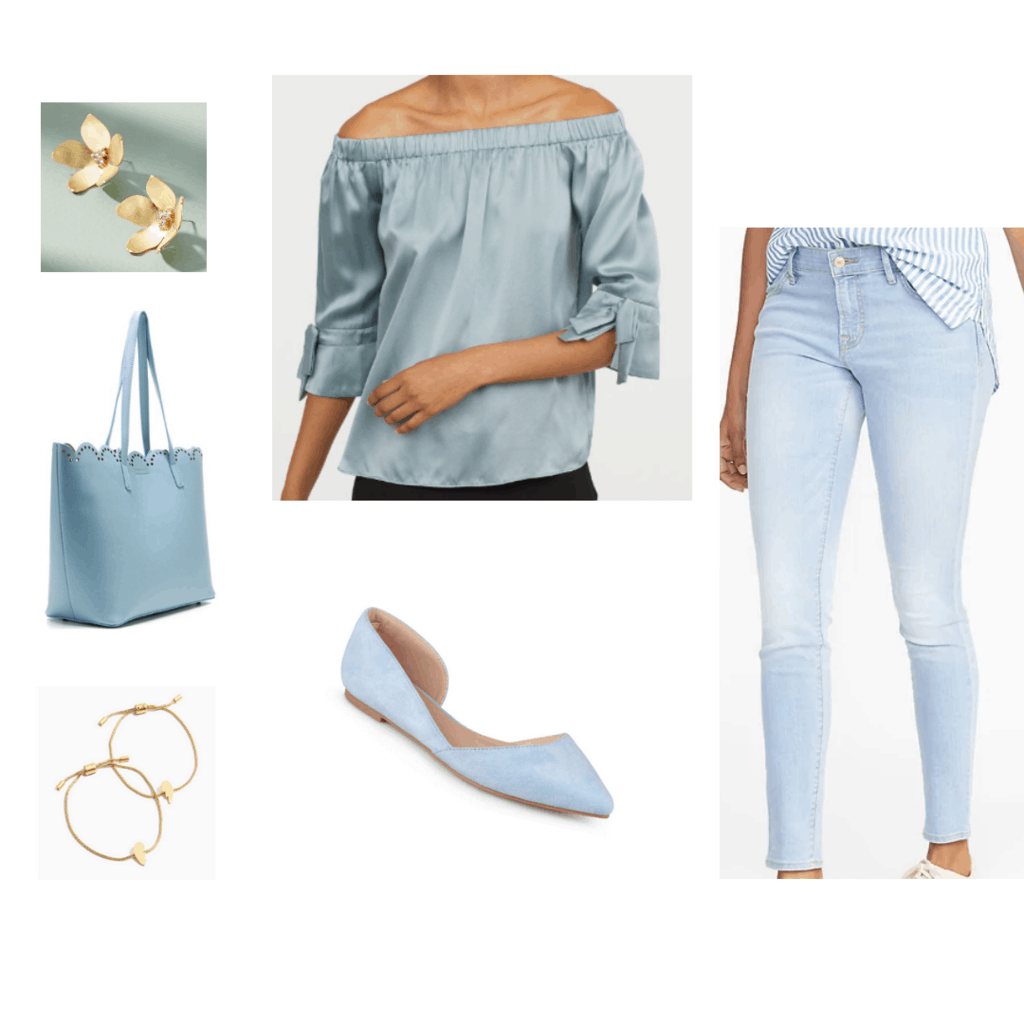
Products:
- Blouse – H&M
- Jeans – Old Navy
- Flats – DSW
- Tote Bag – Levenger
- Earrings – Earrings
- Bracelets – Amazon
If the monochrome look isn’t your thing and you want to get a little more daring, you can also mix primary colors in one outfit for a bold look, as seen below:
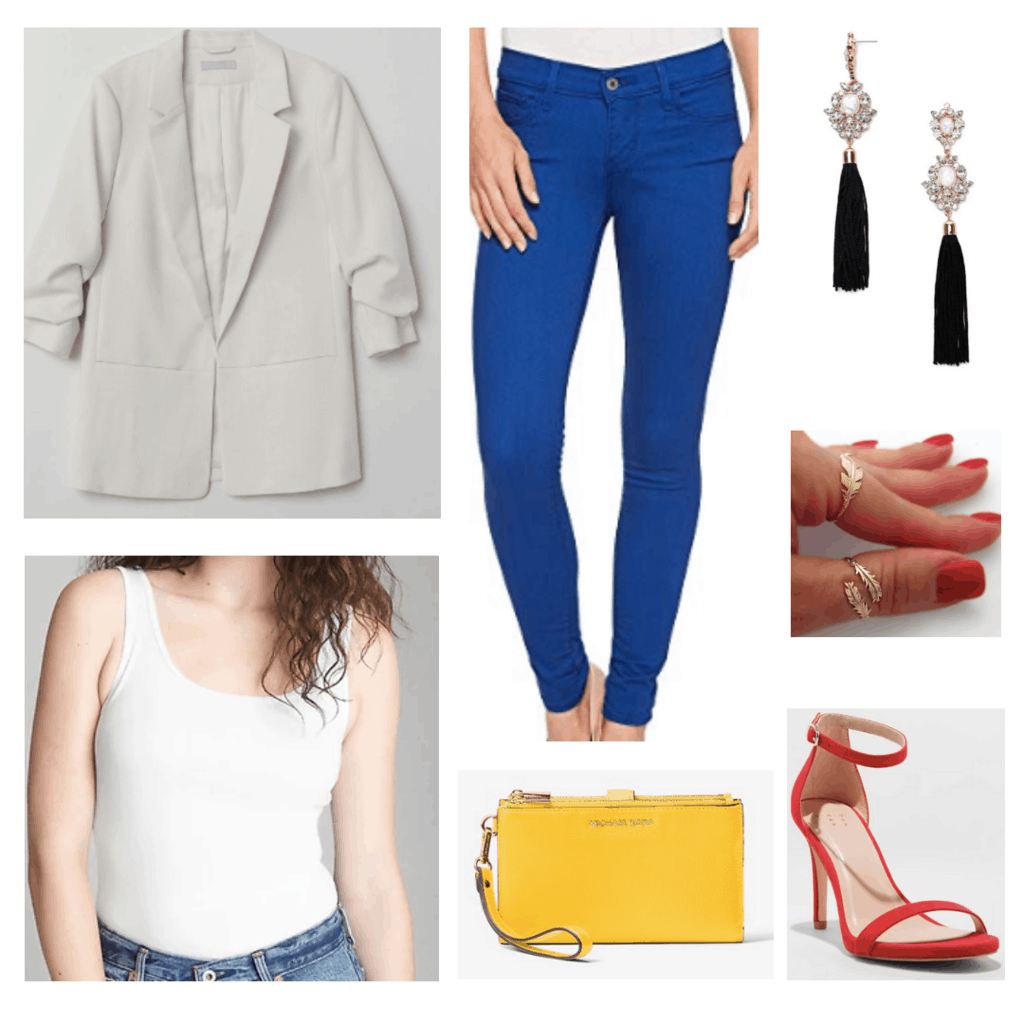
Products:
- Tank Top – Amazon
- Blazer – H&M
- Jeans – Levi’s
- Bag – Michael Kors
- Earrings – Forever 21
- Rings – Etsy
- Heels – Amazon
Complementary Colors
Finding complementary colors is simple: Pick any color on the color wheel (for diversity, try a secondary or tertiary color, i.e. any color that isn’t red, yellow, or blue), and trace your finger directly across the circle to the opposite portion of the wheel. What you will find is that the colors directly line up and appear to be opposites of one another. Some complementary pairings are: orange/blue, violet/yellow, turquoise/maroon.
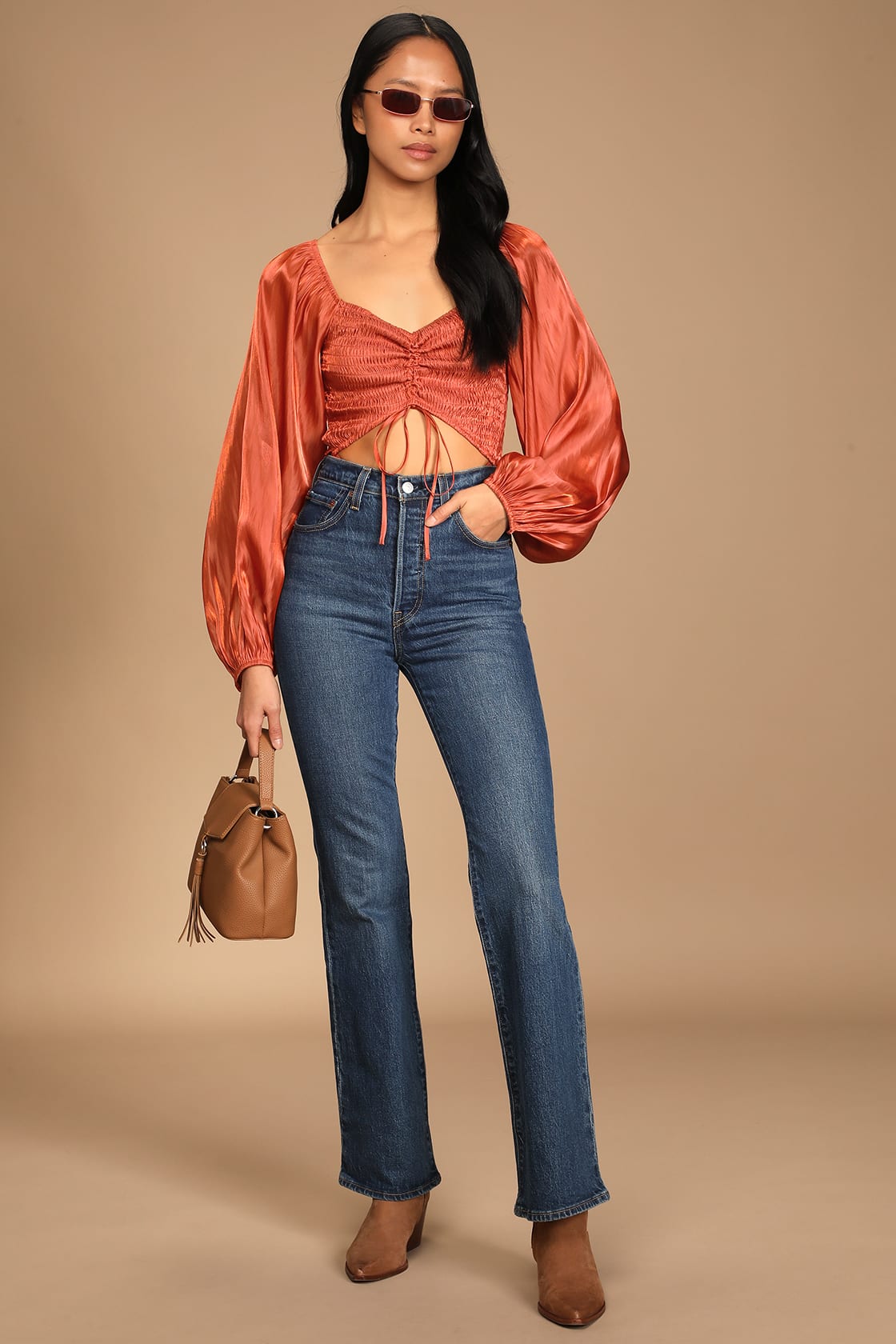
Analogous Colors
Analogous colors are even easier to find on the wheel than complementary colors. Just pick any one color on the wheel, then choose the color to the right or the left of the original — you have found your palette. Hues that are similar to one another on the color wheel create a harmonious and cohesive look. Below, I created an outfit using red and pink – which many say don’t go together, but can actually be combined for a fabulously unexpected look.
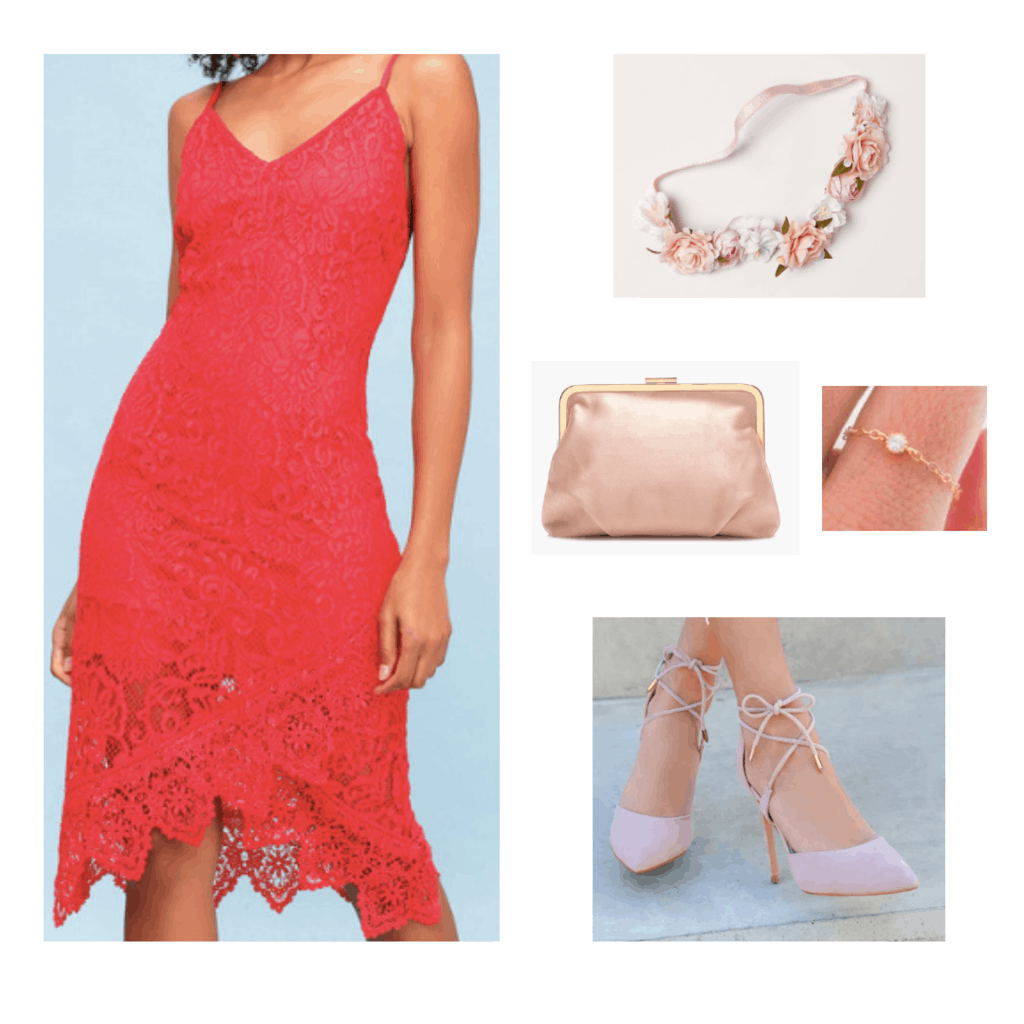
Products:
Accent Color
So you’ve mastered the color wheel. You know how to pair a killer lemon heel with a navy romper. Sometimes, though, situations require more subdued and conservative looks. For example, as much as you would love to wear your summery brights year-round, your boss isn’t exactly a fan of the color wheel (boo).
When you have to tone down the rainbow, try adding just a pop of color to your ensemble. Keep a neutral palette by using black, navy, or cream, and add just a hint of color in the right place. Fashion is all about self-expression and versatility.
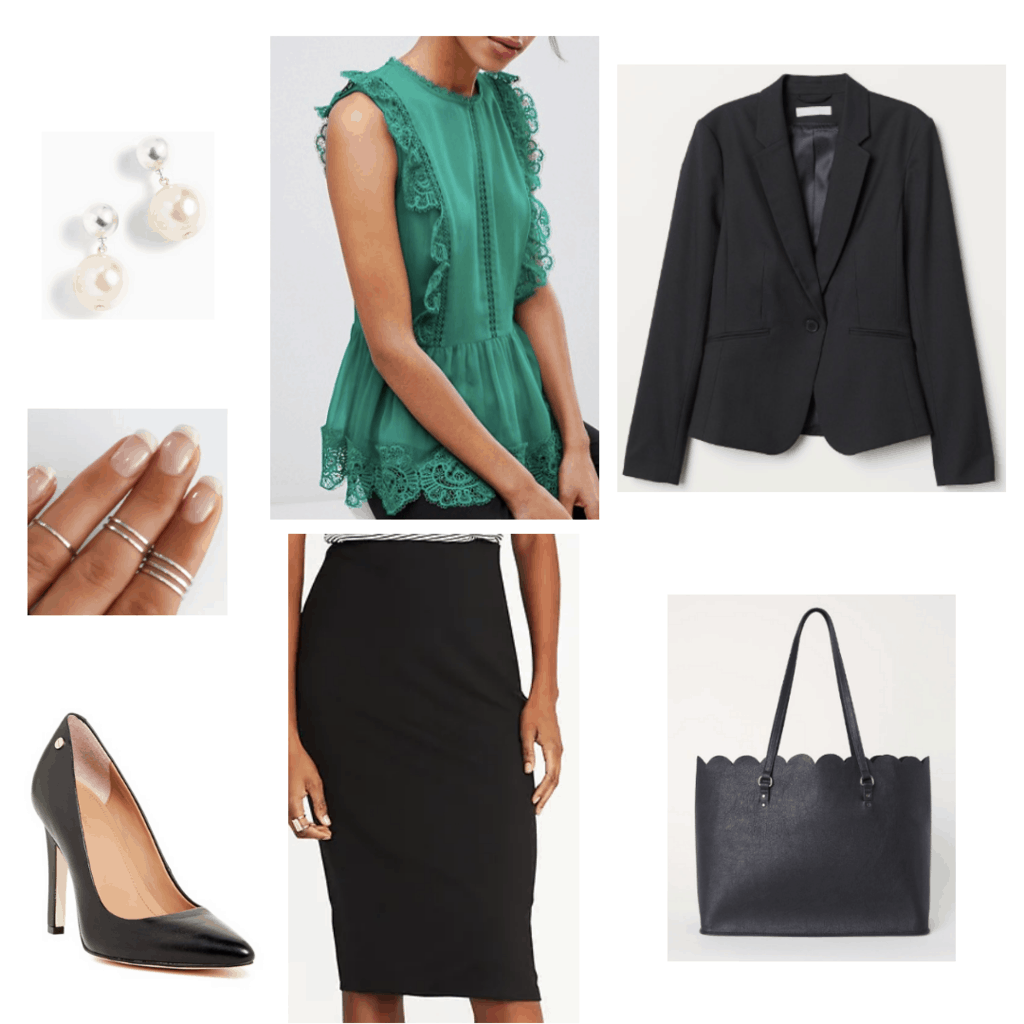
Products:
- Blouse – ASOS
- Blazer – H&M
- Skirt – Old Navy
- Bag – H&M
- Heels – Nordstrom Rack
- Earrings – J.Crew
- Rings – Etsy
One Final Tip About Wearing Color
Before we go, I just want to leave you with a little reminder if you’re doubting your abilities to wear different hues.
Whatever you do, stop saying to yourself: “Well, black is supposed to be slimming. I cannot be caught dead in orange. Purple dress, purple shoes, purple flowers. (Oh my!)” Try refreshing your wardrobe with a little color, and a little confidence – you can do it! In reality, you can wear any color you want – it’s all about finding your most flattering shades and being willing to experiment.
Thoughts?
Do any of you have color matching rules your mother passed down to you? Do you think you only look good in certain colors based on skin tone or body type? Will you try to add more color in your wardrobe in the future? Let me know what you think!
Editor’s note: This post was originally published in 2011; it was completely updated and revamped in 2022 by Sharon with new photos, outfit sets, and information.
If you liked this article about our incredibly cute graduation dresses, consider checking out some of our favorites below —
